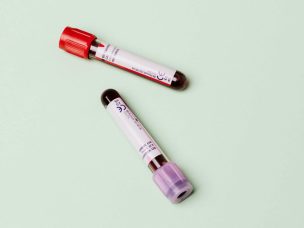![]() Medically reviewed by Dr. Kimberly Langdon Cull, M.D. on Sept. 21, 2023
Medically reviewed by Dr. Kimberly Langdon Cull, M.D. on Sept. 21, 2023
Extracardiac uptake occurs in 11% of Tc-99m PYP scintigraphy patients. However, actionable findings are rare, according to a recent study.
Transthyretin cardiac amyloidosis (ATTR-CA) can be diagnosed with the help of technetium-labeled bone-avid radiotracers. Technetium pyrophosphate (Tc-99m PYP) extracardiac uptake in this situation has yet to be thoroughly studied, and its relevance needs to be better understood.
A study published in the Journal of Nuclear Cardiology evaluated the amount of clinically actionable results in patients receiving nuclear scintigraphy by measuring extracardiac Tc-99m PYP uptake.
Study Population
There were 379 total participants in this study. There were 195 males (51%) and 184 females (49%); 306 self-identified as Black (81%), and 120 self-identified as Hispanic (32%). The average age was 73 years, and the mean BMI was 32.8 kg/m2.
Extracardiac Uptake Distribution of Tc-99M PYP
In 42 individuals (11.1%), extracardiac Tc-99m PYP uptake was discovered. Fourteen participants had Tc-99m PYP uptake exclusively in their bones; 21 had uptake only in their kidneys; four had uptake in both their kidneys and bones; two had uptake only in their breasts; and one had uptake only in their thyroid.
Early Tc-99M Pyp Imaging Is Preferable Due to Kidney Clearance
Patients who were imaged 1 hour after Tc-99m PYP administration were more likely to exhibit extracardiac uptake than those who were imaged 3 hours after Tc-99m PYP administration (23.8% vs. 6.2%, respectively; kidneys, in particular; 14.3% vs. 2.2%, respectively; stratified by scan time). The extracardiac uptake rates of those with ATTR-CA (10.5%) and those without ATTR-CA (12%) were not significantly different.
Positive Clinical Findings After the Tc-99M PYP Imaging
Four patients (1.1%) had clinically actionable results, which were treated according to the recommended strategy. One participant with bone uptake was a planned shoulder arthroplasty patient who suffered from severe, chronic pain in both shoulders due to advanced osteoarthritis. Following a dedicated CT of the neck and thyroid ultrasonography, one patient with diffuse, bilateral thyroid uptake was found to have a heterogeneous nodule measuring 2.2 cm in size.
Increased breast radiotracer uptake was considered abnormal and required follow-up imaging to rule out cancer due to the increased risk.
Extracardiac results may emerge with greater scintigraphy use, requiring follow-up, reporting, communication with patients and providers, and care to detect clinically relevant findings while limiting unnecessary testing.
Source:
Chan, N., Einstein, A. J., Griffin, J. M., Rosenblum, H., Teruya, S., Cuomo, M., De Los Santos, J., DeLuca, A. J., Johnson, L. L., Kinkhabwala, M., Leb, J., Mintz, A., Fine, D., Helmke, S., Muralidhar, V., Pandey, S., Sabogal, N., Saith, S. E., Winburn, M., . . . Maurer, M. S. (2023). Prevalence and significance of extracardiac uptake on pyrophosphate imaging in the SCAN-MP study: the first 379 cases. Journal of Nuclear Cardiology. https://doi.org/10.1007/s12350-023-03310-7










